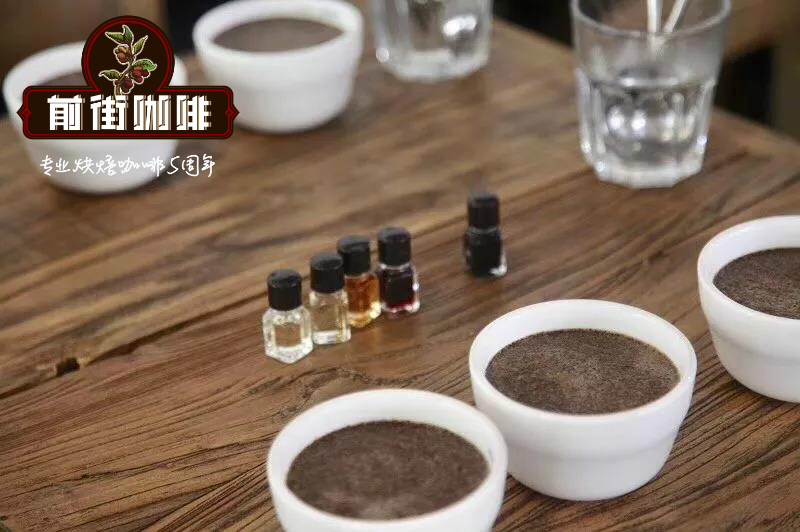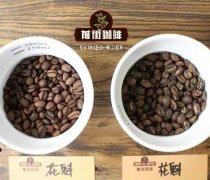What are the varieties of Yunnan boutique coffee beans? are Yunnan coffee beans Arabica beans?

Professional coffee knowledge exchange more coffee bean information please follow the coffee workshop (Wechat official account cafe_style)
The Root-seeking Journey of Yunnan Fine Coffee-- the Old Variety Iron pickup & the New Variety Katimo
When it comes to Yunnan boutique coffee, perhaps the most common word we hear is "Yunnan small grain coffee", and most of them will say "Yunnan small grain coffee-fragrant but not bitter, strong but not strong", so many people classify the varieties of Yunnan coffee as "small grain species". Naturally, the evaluation of the taste of Yunnan coffee is "fragrant but not bitter, strong but not strong". Regardless of whether it is correct or not, there is no word "small seed" among the more than 900 named coffee varieties at present, so this "small seed" is not strictly a coffee variety, it is just a nickname given to this variety by the people of Yunnan. In fact, the name of Yunnan "small grain coffee" should be called arabica--typica (Arabica-iron pickup). Or arabica--bourbon (Arabica-bourbon).
Tracing back to its roots, typica originated from Ethiopia, the ancient origin of coffee, and is the earliest original species of coffee. Bourbon is a variety of typica, both of which have rich aroma and excellent taste performance, and belong to very high quality varieties in Arabica. It is said that the coffee tree species that was first introduced into Zhukula in Yunnan is typica. When coffee was planted on a large scale in Baoshan area in the 1950s, it was also typica and bourbon. But the problem is that although these two varieties have excellent taste, they are not resistant to diseases and insect pests, are prone to leaf rust, and the yield per mu is relatively low, so corresponding to this, there are "new varieties".
The so-called new variety actually refers to catimor (Katimo), which is the hybrid of timor and Arabica of the Roberta family. Compared with the old variety, it lacks rich aroma and taste, and has a relatively shallow smell of grass and soil, but it has the advantages of resistance to diseases and insect pests, easy to manage, large yield, and its yield per mu can reach up to 350kg raw beans, which is more than twice that of the old variety.
So when Nestl é succeeded in promoting high-yield new varieties in Pu'er in the 1990s, brown farmers in Baoshan also cut down old varieties and changed them to new ones. With a round of coffee expansion, new varieties are increasing and old varieties are decreasing day by day. Finally, today's situation: the old varieties have almost been cut down, and the little ones that survived are all "old, weak, sick and disabled". Most of the trees are more than 20 years old. Over the years, the output and quality are not as good as they used to be.
Of course, if it is used to make instant coffee or general commercial beans, high-yield catimor is a good choice, but if you want to look for Yunnan specialty coffee, then the old variety of iron pickup has become the first choice because of its congenital excellent genes. Therefore, this trip to Yunnan also followed the trail of the old varieties. But the reality of Yunnan boutique coffee is really cruel. Before going, Brother Zou told me that there was an old variety in his relative's house, but what he saw excitedly was a crazy growing coffee forest, which belonged to his aunt. Because the aunt was too old and did not have the strength to replant and renovate-- these old varieties survived, but the aunt was unable to manage it alone, so he let the tree grow naturally and pick some fruit when it was ripe.
Important Notice :
前街咖啡 FrontStreet Coffee has moved to new addredd:
FrontStreet Coffee Address: 315,Donghua East Road,GuangZhou
Tel:020 38364473
- Prev

Yunnan fine coffee beans have what Yunnan coffee beans have flavor close to Blue Mountain?
Professional coffee knowledge exchange More coffee bean information Please pay attention to coffee workshop (Weixin Official Accounts cafe_style) The top Yunnan fine coffee varieties, growing at 1500~2000 meters, BM coffee (bm, the most customary explanation should be Blue Mountain coffee introduced from Jamaica), planted in Simao and Baoshan areas of Yunnan Province. After excellent processing, the bean shape is neat and uniform,
- Next

Where does Kopi Luwak come from? where does Kopi Luwak come from? where does Kopi Luwak come from?
Coffee workshop (Wechat official account cafe_style) Java coffee beans have now lost their proud name: mocha-Java, because in the early 1970s, farmers cut down traditional coffee trees and planted high-yield and high-profit coffee beans. In Java, most of
Related
- Beginners will see the "Coffee pull flower" guide!
- What is the difference between ice blog purified milk and ordinary milk coffee?
- Why is the Philippines the largest producer of crops in Liberia?
- For coffee extraction, should the fine powder be retained?
- How does extracted espresso fill pressed powder? How much strength does it take to press the powder?
- How to make jasmine cold extract coffee? Is the jasmine + latte good?
- Will this little toy really make the coffee taste better? How does Lily Drip affect coffee extraction?
- Will the action of slapping the filter cup also affect coffee extraction?
- What's the difference between powder-to-water ratio and powder-to-liquid ratio?
- What is the Ethiopian local species? What does it have to do with Heirloom native species?

